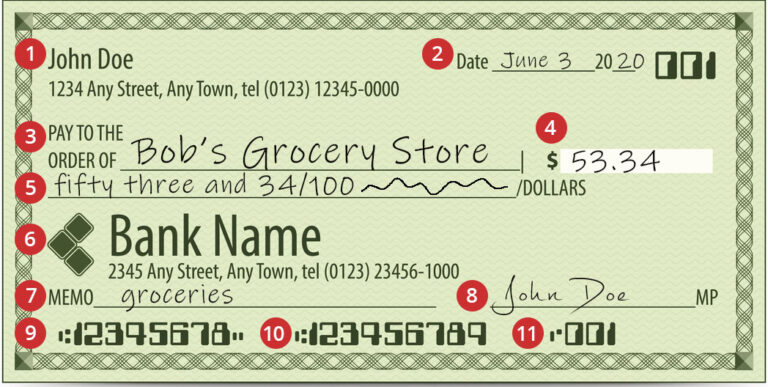Fanny Mae Form 1003 Uniform Residential Loan Application
If you’re applying for a mortgage loan or have applied for one in the past, you’ve possibly heard of Fannie Mae Form 1003, Uniform Residential Loan Application. Form 1003 is the standard form used by most mortgage lenders to collection the information of a potential borrower necessary to determine whether the applicant is qualified to receive a loan.
Mortgage application Form 1003 was created by the Federal National Mortgage Association, more commonly known as Fannie Mae. Fannie Mae is a US government-sponsored enterprise that purchases and guarantees loans that are provided by lenders who partner with the agency, essentially acting like a form insurance for mortgage lenders. Fannie Mae purchases loans from primary lenders like Wells Fargo, Quicken Loans, Chase, Bank of America and many other large and smaller lenders.
Fannie Mae created Form 1003 as a standard form that lenders can use to collect the information deemed necessary to assess how risky a borrower is. Even those lenders who do deal directly with Fannie Mae typically use Form 1003 or something similar to it to ensure that the loans they provide fit into the risk assessment criteria used by Fannie Mae for purchasing loans from primary lenders and re-selling those loans as mortgage-backed securities (MBS).
The most recent version of Form 1003 is dated June, 2009. Fannie Mae compliant lenders are expected to use that version of the form (rather than an older one) for any new mortgage applications.
Also, Fannie Mae’s fellow mortgage-focused Government Sponsored Enterprise (GSE), Freddy Mac has a form that is very similar to the Form 1003 called Freddy Mac Form 65. Fannie Mae has said that Freddy Mac Form 65 is a suitable substitute for Form 1003.
If you are applying for a mortgage, you will normally have help from your loan originator to make sense of what’s requested on the form and to fill it out correctly. However, there is a lot of information on the mortgage application that requires you to have some understanding of your finances, including your income and your assets and liabilities. In order to fill out the form correctly, you’ll need to gather that information.
Here are some things you’ll need to get together to start filling out the Universal Residential Loan Application or any other substitute form that serves the same purpose. If you have a co-borrower (someone else who is also applying for the loan with you, meaning that person will also be on the hook for repayment of the loan), the information listed below will need to be gathered for that person as well.
- Employment history information for the past two years
- Recent paycheck stubs
- Recent bank account statements
- Details about any other assets, including real estate, retirement fund(s), automobile(s) owned, etc. that you own
- Details about how much you owe on any of the assets you own
- Information about any other liabilities, or monthly payment obligations you have
Because Form 1003 is used for such a vast spectrum of people in various circumstances, not all of the fields will apply to your specific situation. Your mortgage lender can help you understand any fields you may have questions about.
What Information is Requested on the Form 1003 Mortgage Application?
Let’s go through the Form 1003 Universal Residential Loan Application sections to understand what they’re requesting and why.
Section I: Type of Mortgage and Terms of Loan
In this section, you will select which type of mortgage you’re interested in applying for from several options: VA, FHA, Conventional, USDA/Rural Housing Service, and Other. The most common (and least restrictive) loan is a conventional loan. Conventional loans make up the majority of mortgage loans (about three-quarters of loans according to census data for new homes in 2018) in the United States.
VA loans are only available to eligible military vets who have qualified under the Veteran’s Affairs guidelines and have received a certificate of eligibility (COE) from the US Department of Veteran’s Affairs.
FHA loans are also subsidized by the federal government. FHA loans available to people who meet certain criteria established by the Federal Housing Authority, a branch of the US Department of Housing and Urban Development.
USDA/Rural Housing Service Loans are yet another federally subsidized mortgage program. Qualifications for USDA mortgages are determined where you live and other criteria as defined by the US Department of Agriculture.
There are other types of loans outside of these categories, but they are much more rare. If you have any questions about which of these you may qualify, your mortgage broker can help you make the right decision about which to apply for.
Most of the information in the loan terms section of Section I will be provided to you by your lender as you coordinate with him or her. You have some flexibility on things like how many months (usually 180 – 15 year – or 360 – 30 year) and amortization type. The most commonly used is a 360 month (30 year) mortgage at a fixed interest rate. The interest rate is determined by the lender’s policies in connection with your creditworthiness, how much money you’ll put down as a down payment, and other factors, including the lender’s ability to be competitive. That’s often why people will shop mortgage lenders in search of the best rate for their particular situations.
Section II: Property information and Purpose of Loan
In this section, you’ll identify the property you intend to purchase and use as collateral for the mortgage for which you’re applying. If you’re building a new home on a piece of property, and using this mortgage application to finance that type of project, you can indicate it here. Also, if you’re refinancing an existing loan for a home you already own, you can indicate that here as well.
Section III: Borrower Information
This section allows you to enter information about yourself and your co-borrower if you have one. Your personal information will be used to pull your credit and verify your identity. With your social security number, your lender can lookup your FICO score, which is one of the first tests of whether you’re eligible for a loan. Credit scores lower than 550 typically disqualify a person from receiving a loan unless your co-borrower’s credit is good enough to offset it.
Section IV: Employment Information
This section allows you to present information that proves that you can meet the payment obligations of the loan you’re intending to apply for. Lenders and Fannie Mae want to see a history of solid income as an indicator that you will continue to earn money from which you can make your monthly mortgage payment.
The majority of mortgage applicants have a job from which they can provide paystubs or their IRS Form W-2 tax statements that detail their monthly and annual income. Others are self-employed. Self-employed applicants are required to provide a bit more proof of their income, usually some history of tax returns and evidence of the longevity of their company.
Section VI: Assets and Liabilities
This section is yet another check of how stable your financial situation is. Your debt obligations (liabilities) in this section are grouped with your housing costs from the previous section and compared against your income to create a back-end debt-to-income (DTI) ratio (or back-end ratio) to evaluate whether you’re financially stable enough to be granted your loan request. Lenders typically won’t grant a loan to someone when it creates a situation where their DTI is over 50%, even if they have a higher credit score. With a credit score less than 580, the maximum back-end DTI for FHA loans is 43%.
For the various types of assets listed in this section, Form 1003 also expects some kind of proof.
A word of caution about both of the previous two sections: There is a natural tendency to inflate a person’s income and net worth. When filling out this form, this temptation toward “puffing” should be avoided, as it will likely cause issues leading up to closing. Lenders do their homework during the underwriting process. They are usually not afraid to deny a loan at the last minute in a situation where something from the application, whether it’s inflated income or assets, or liabilities that aren’t disclosed, is found out before the funds source. I’ve known of a couple who had already begun to move in to their new home after they signed closing papers, and the lender somehow found out that the wife had quit her job just a day or two before at a fast food restaurant. Her income amounted to only a few hundred dollars per month, but it was enough for the lender to deny funding at the last minute, which caused serious headaches for the couple and their kids.
Section VII: Details of Transaction
This section allows the lender to consider what the funds their lending will be used for, delineated using categories that are important for the lender to understand.
Section VIII: Declarations
In this section are more detailed questions about topics that could indicate that the borrower is likely unable to live up to the obligations of the debt contract. Questions about whether you’ve had a past bankruptcy, your citizenship status, your intention with regard to occupying the property purchased with the loan, and several other filters are used by the lender, based upon the decades of lending experience of Fannie Mae, to ensure that they don’t get surprised by some detail about a borrower that makes it highly unlikely the person is capable of meeting the obligations of the contract.
Section IX: Acknowledgement and Agreement
In this section you’re required to certify through your signature to the lender that the information you’ve provided is accurate, and you give permission to the lender to do verification checks on the information you’ve provided.
Section X: Information for Government Monitoring Purposes
Filling out this section is voluntary. The information requested in this section is used by the US government to ensure that the lender is not discriminating in their efforts to provide loans.







